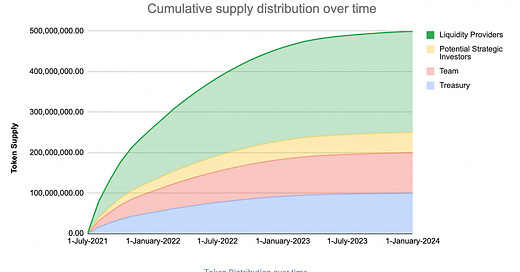In 2012 a big crowd swore Bitcoin was headed to zero. A decade later no one asks that.
Instead we ask: “Will this 50-percent crypto yield survive the year?”
What “high” really means
A yield is only durable when the product behind it earns at least that much, in cash, every year.
Sustainable APY ≥ Real income generated
If the yield is larger than the income, someone else is footing the bill. That’s a yield that is too high.
A quick look at a yield that does make sense
Stablecoins like USDT/USDC currently command eight-to-ten percent because traders will actually pay that rate to borrow dollars. Real demand funds the coupon. Should dollar shortages ease, those yields will fall. Nothing magical there.
The rule of thumb for everything else
Can the project keep paying its headline rate without printing more of its own token?
If the answer is no, you’re staring at token inflation—a subsidy that ends the moment the minting schedule runs dry.
Case study: Trader Joe on Avalanche
Provide liquidity to the JGN/AVAX pool.
Earn ~10 % from trading fees (real revenue) plus fat bonuses paid in JOE and JGN tokens (freshly minted).
Headline APY looks sky-high. Reality depends on what those bonus tokens are worth after you receive them.
JOE currently issues about 864,000 tokens per day—roughly $1.3 million at $1.50 each—while daily buy-backs from fees cover only $200,000. Supply grows six times faster than demand. Continuous sellers beat continuous buyers almost every time.
You can stake JOE and collect a 60 % APR, but that figure lives or dies on price. A 50 % drop in JOE cuts your dollar return in half, no matter how many new coins show up in your wallet.
Why most inflationary tokens sag
Auto-compounding vaults (Yearn, Beefy, etc.) sell rewards the second they land.
Levered “yield farms” dump even faster.
Vesting tricks simply delay the sell wave.
The only reliable counter-force is attention—new users, fresh hype, another story for people to tell their friends. Attention can soak up supply for a while, but it must keep getting louder as emissions keep coming.
Questions to ask before chasing a giant APY
Where does the money come from—fees, treasury, or printer?
How big is the daily sell pressure from new token issuance?
Is demand (real usage or fresh attention) growing fast enough to absorb the extra supply?
Would the protocol still pay a meaningful yield if the printer stopped tomorrow?
Answer those and you won’t predict the exact price, but you’ll know whether the lunch is free or simply prepaid by someone who plans to leave the restaurant before the bill arrives.
This is not investment advice. All opinions are my own. I do not own JOE. Re-written on May 18, 2025.



